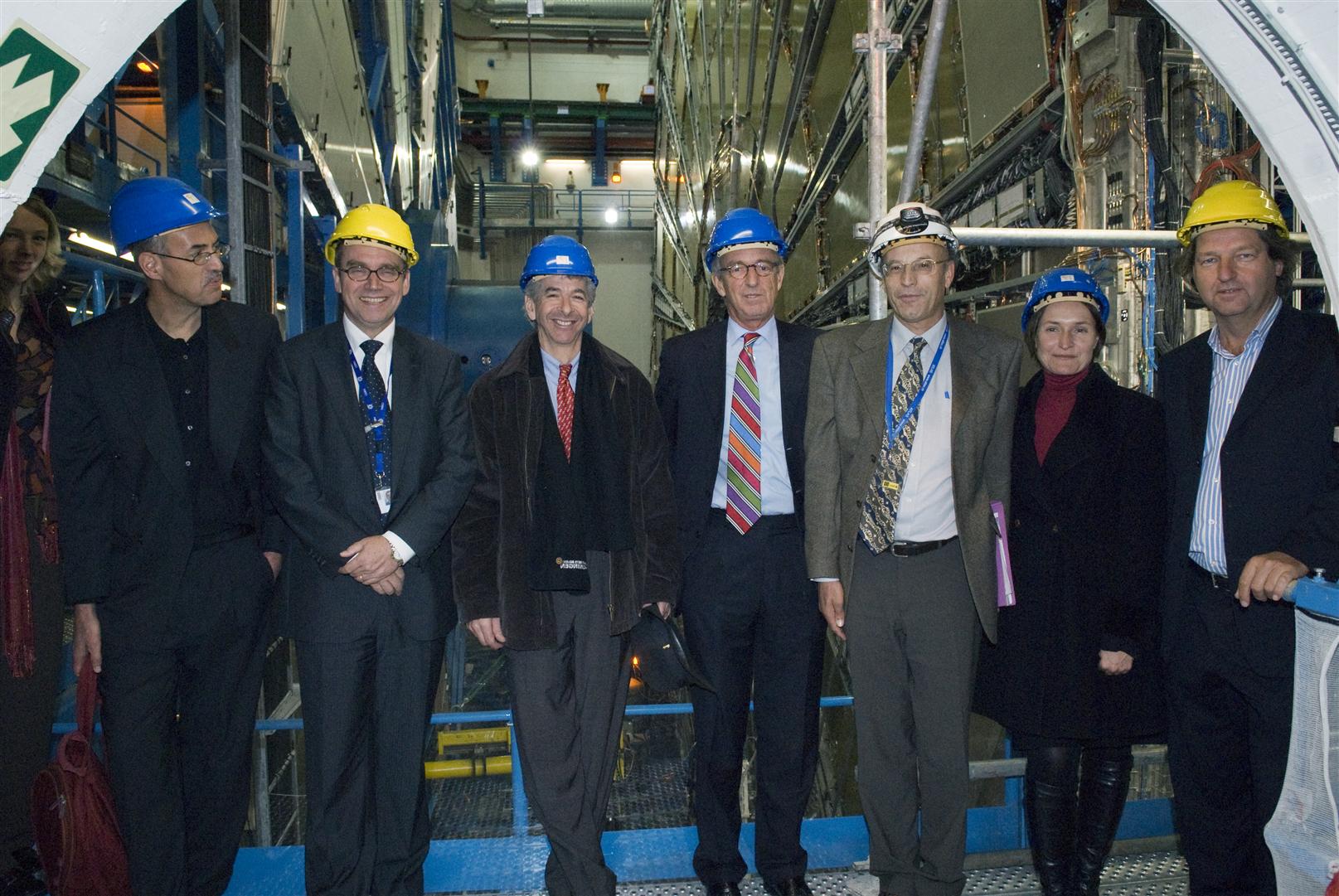Dutch ministerial visit
Minister of Education, Culture and Science from the Kingdom of the Netherlands, Ronald Plasterk, visited CERN on 25th October. With Jos Engelen, CERN Scientific Director, as his guide he visited Point 1 of the LHC tunnel and ATLAS, where Nikhef (the national institute for subatomic physics, a Dutch government and university collaboration) constructed all 96 of the largest muon drift chambers in the barrel as well as parts of the magnet system, the inner detector, the DAQ and triggering.
Overall the Netherlands contribute 4.5% to the annual CERN budget and the minister’s visit celebrated the contributions of the 79 Dutch staff members and 160 total Dutch users registered with the Organization. Dutch scientists have also worked on LHCb, constructing parts of the outer tracker (OT) and VErtex LOcator (VELO), both charged particle measuring detectors, and within ALICE playing a leading role in the design and construction of the Silicon Strip Detector (SSD). They have also contributed to the Grid, to accelerator technology, and, to complete the particle physics spectrum, have theorised on fundamental physics at CERN; a striking example being the work on renormalizable gauge theories, honoured by a Nobel prize for Gerardus ‘t Hooft and Martinus Veltman in 1999.
Dr Plasterk had the opportunity to meet and exchange ideas with some of the young Dutch researchers currently contributing to CERN research and later signed the guestbook.


